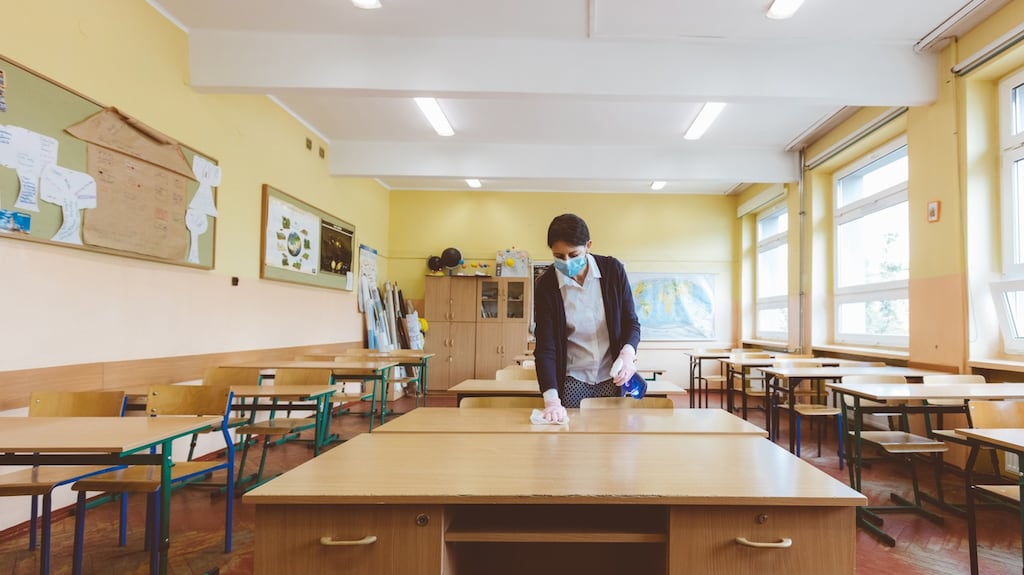There were plenty of reasons to fear the results of today’s international study into reading ability for primary children.
Schools in Ireland shut for longer than many other countries during 2020 and 2021. Teachers reported higher levels of absenteeism and lower levels of engagement when they reopened. Parents worried about learning loss and gaps in their children’s learning.
The results are finally in – and they make for surprisingly good reading.
The Progress in International Reading Literacy Study (Pirls) - which assessed the reading skills of hundreds of thousands of fourth class pupils across almost 60 countries in 2021 - shows Irish pupils rank among the best in the world.
QPR’s Jimmy Dunne finds solace in football after emotional week
In a country of such staggering wealth, no one should have to queue for free food
Samantha Barry: ‘There’s not a moment where I’m not representing Glamour. I don’t get to switch it off’
Former Tory minister Steve Baker: ‘Ireland has been treated badly by the UK. It’s f**king shaming’
On paper, at least, Ireland has climbed up the international league table from fourth in 2016 to second in 2021, behind Singapore.
Ireland is followed by Hong Kong, Russia, Northern Ireland and England. Finland, a long-standing high achiever, was in 9th place while the US ranked in 11th place.
There is a health warning, however.
Pupils in Ireland, however, were among a group of more than a dozen countries which examined pupils in autumn 2021 rather than spring 2021 for Covid-reasons. As a result, the study’s international authors have cautioned that direct comparisons with other countries needed to be made with “great care”.
Nonetheless, what we can say for sure is that Ireland remains one of a small set of high-achieving countries. It is also clear that reading performance has, at the very least, remained stable since the last study in 2016.
So, what happened? And why hasn’t Covid cast a greater shadow over children’s teaching and learning?
The study doesn’t examine the “why” behind the figures.
However, it does note that primary pupils in Ireland spent a considerable amount of time reading during lockdown periods. This may have helped explain their strong performance. Pupils who read more often on paper, rather than screens, tended to score higher,
Covid-catch up classes - which provided additional teaching hours - and summer programmes may also have played a small role.
It seems more likely that policies introduced over the past decade or so - aimed at boosting literacy and numeracy, as well as school self-evaluation - combined with the dedication of schools helped provide a strong foundation for children.
Some of the greatest concern until now has been the effect of the pandemic on children from the least well-off family backgrounds, who statistically were more likely to not have access to proper digital devices, quiet study spaces or parental support.
[ Report: Irish primary children excel in international reading testsOpens in new window ]
[ ‘The level of anxiety we’re facing in schools is unprecedented’Opens in new window ]
Encouragingly, the study indicates that while pupils in Ireland from more disadvantaged backgrounds performed at a significantly lower level than their peers elsewhere, the gap was no greater than the last study in 2016.
This is backed up in a separate study also published on Tuesday - the National Assessments of Mathematics and English Reading (Namer) - which took place in Irish primary schools in 2021. The last study of this type was in 2014.
The assessments, administered to more than 10,000 pupils in second and sixth classes during the first two weeks of May 2021, included a special focus on Deis schools, based in socio-economically disadvantaged areas.
Similarly, it also found that there was no significant gain or fall in average achievement in Deis schools between 2014 and 2021.
The pandemic still left its mark, however.
Indicators of wellbeing - tiredness, bullying, anxiety, etc - declined since the last study.
Pupils also reported that they enjoyed reading less and their confidence about reading appeared to decline marginally. Some studies have suggested this may be due to mobile phone ownership, but that is not examined in this study.
In the meantime, though, there is relief among many parents, teachers and policy-makers that our children have emerged on the other side of the pandemic in better academic shape than many once feared.





